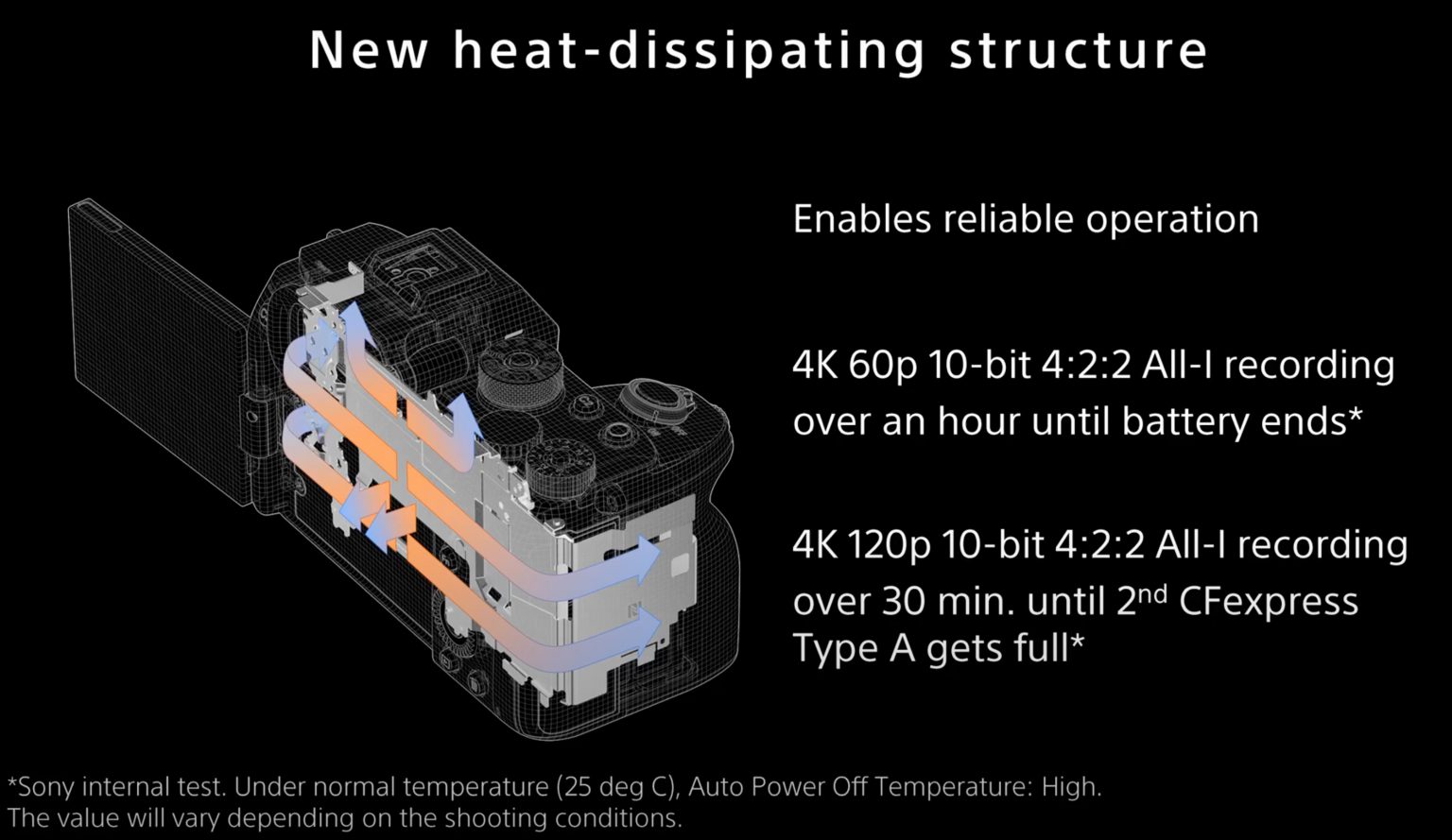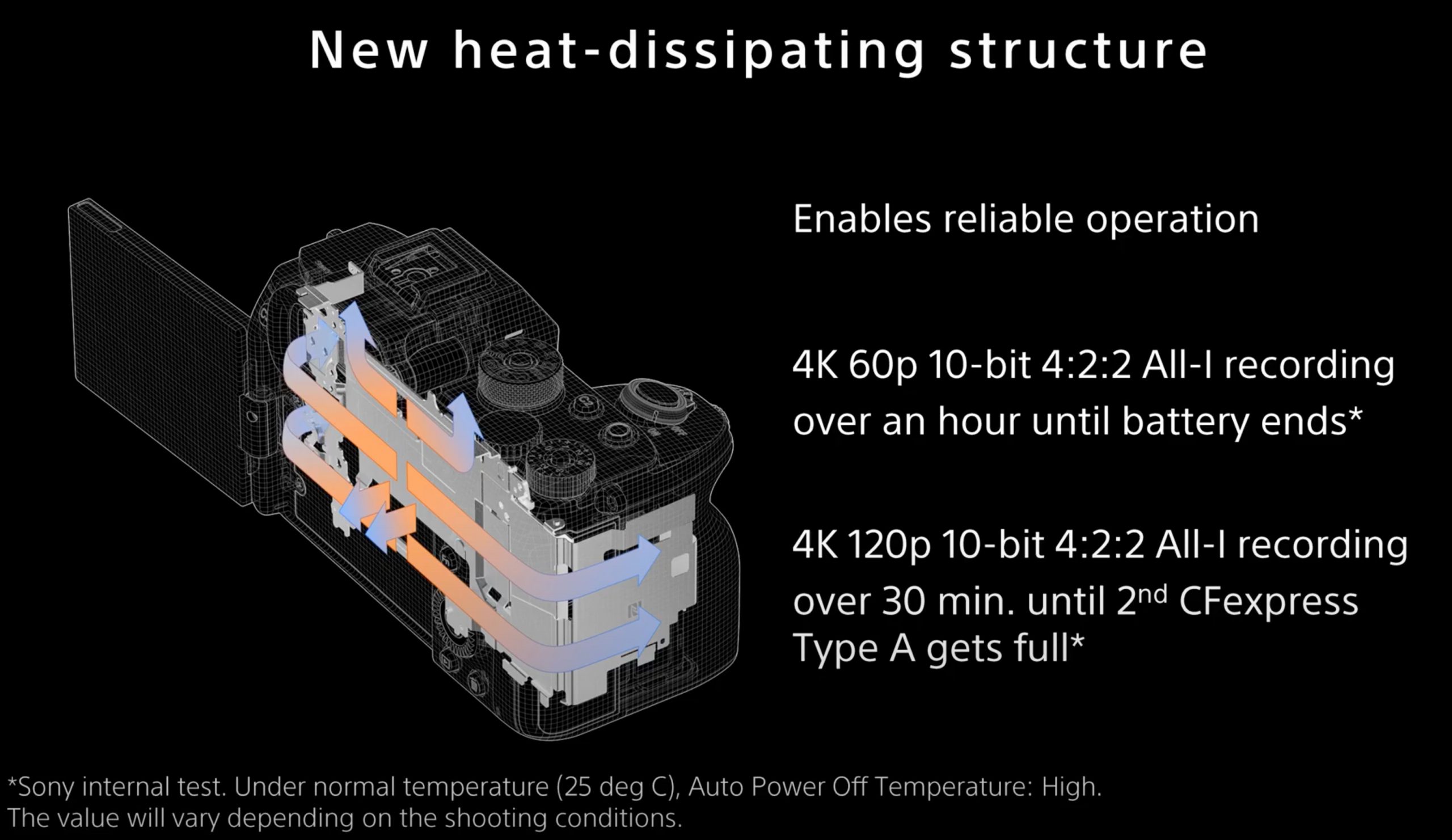
When does a heat dissipating structure become a heat absorption structure in direct sunlight?
There are now a few confirmed reports by the first Sony A7S III reviewers that the camera has an overheating problem in bright midday sun.
The Sony A7S III reviews have been mainly positive, thanks to the superb job Sony’s PR department did on buttering people up.
But the truth is usually somewhere in between. I have no first hand experience of the camera because Sony’s marketing department is full of exactly the kind of chinless wonder’s you’d expect in cahoots with social media starlets. With such poor quality lifestyle content out there for what’s supposed to be a professional tool, is it any wonder why filmmakers once again find themselves caught without critical info and feel like they’re being mis-sold on a bunch of hype? It often feels like I am in some kind of Groundhog Day watching the naive preaching to the naive.
Only very few people who have done field tests with the A7S III. On YouTube, Philip Bloom, Hugh Brownstone and Dan Watson have shown variable results for overheating. Huge and Dan showed the A7S III had similar problems to the Canon EOS R5 in direct sunlight. Philip Bloom did a test with an infrared heat lamp and didn’t encounter many issues. But heat radiation from the sun is UV, not infrared. Maybe the camera expects only to be used in the shade! Perhaps with a parasol rigged to the hot-shoe? How about some sun creme? Pair of sun glasses? Sun hat? Coming soon – the Sony UV sunscreen cage by SmallRig!
So enough nonsense – it’s time to quote an engineer! An automotive electrical engineer to be exact, 30 years in the business designing electronics that have to withstand very high temperatures in a vehicle. The source of the comment is Huge’s YT video below [edited for clarity]:
I am an Electrical Engineer of 30+ years designing electronics for the automotive world which must maintain operation to 85C (185F) and without permanent damage over 100C (212F)… as I pointed out to Dan (Watson), internal heat generation (radiation) is outbound as well as inbound (thermal absorption).
There are actually 3 thermal tests that must be made to determine if the camera is a net “source” or “sink”.
(1) standard room temp of 23C
(2) outdoor / hi-temp under “sun-load”, but also CRITICAL is:
(3) which is outdoor / hi-temp in the shade! This shade reference is critical since this test will tell you if the thermal failure is absorption (inbound) vs. radiation (outbound) induced.
Now this kind of testing is really the realm of a seasoned filmmaker or engineer rather than the trendy social media influencers Sony wanted to review the camera. So we may not get a true impression of the A7S III overheating issues for quite some months (or never)!
We do however have real-world tests to go from.
Further remarks the engineer:
“No reviewer is understanding this point since they are not Engineers. I get that – but then they extrapolate conclusions which are simply wrong – some favoring Sony and Canon and some against both brands. Until you have a FLIR type camera showing thermal mapping of the body you really don’t have any idea where the heat source/problem area is located.”
On the Sony A7S III a black magnesium alloy body is used as a heat-sink to dissipate heat from the A7S III’s LSI / copper heat spreader. If the body absorbs a lot of UV radiation and heat from the sun, this will be conducted from the outside in.
This is the dilemma for camera designers. Do they insulate the electronics from the body which is exposed to the sun and high ambient temperatures externally? It appears the Canon EOS R5 by not bothering with a copper heat pipe does. In this situation the camera becomes a net source and the problem is internal heat build up which can’t escape effectively. However if you conduct the heat away from the LSI using the conductivity of the body, the camera risks becoming a net sink, susceptible to external UV radiation from the sun.
The ideal solution is to have a shaded heat sink exposed to flowing air, not the midday sun. A concealed heat sink in a slot gap like the Sigma Fp or behind a vent in a shaded internal area such as with the Panasonic S1H should do the job. Using the body as a heat sink not so much, as it doesn’t work if it is absorbing heat from the sun.
The bottom line is that reviewers aren’t engineers but the camera companies are. I expect them to do their homework when it comes to thermal design.
When it comes to reviews and field tests, a lot of these aren’t representative of how people actually shoot. If you get a good real world test and not something rushed out for social media, these can tell us valuable things and counterbalance the controlled test data. To counter Canon’s best-case scenario 30 minutes of 4K HQ from a cold boot at 23 degrees, all a reviewer needs to do is take the camera out on a sunny day for a couple of hours, shoot a few short clips and 150 stills, then see how long it can still record in 4K HQ for after that. 1-2 hours is not that far into a day’s shoot for most people. If the camera becomes a paperweight so soon in the day, you probably shouldn’t spend $4000 on it.
Indeed the actual thermal limit is so variable in the real world that even the first take of oversampled 4K video in the day can be as little as 2 mins or even 0 minutes on the EOS R5. The variables and timing are everything. One thing that engineers try to do is eliminate variables, do controlled tests and get a true impression of what’s happening. However the real world isn’t like this and that’s why tests differ so much between different people. The engineer comments that Dan Watson’s test was an unintentional worse case scenario for the A7S III, but that doesn’t mean to say the camera won’t have 4K reliability issues in direct sunlight:
“Black is better color if you know you are in a ‘sink’ condition where you want the device to radiate away heat but is usually bad if you are often in a sunny condition (the white lens story helps here). That is why heatsinks on the back of electronics out of sight are normally black. But, Dan placed his cameras on a black trampoline which was TERRIBLE since this type of surface was likely 15-20F hotter than ambient air temp due to UV absorption.”
“He set the cameras on mini-tripods but STILL sat them on top of a black surface maybe 6 inches above a black, heat generating (black) “baking” surface”
I have no doubt that in the real world the A7S III doesn’t exhibit the kind of extreme faulty behaviour the EOS R5 does.
However the facts remain it is shutting down in direct sunlight due to the heat sink physics described by the engineer above.
Therefore we need to see more midday Summer sun field tests the camera in hot conditions with all the variables clearly presented, and less glossy lifestyle bullshit from social media influencers keen to hang onto their Sony relationships.





